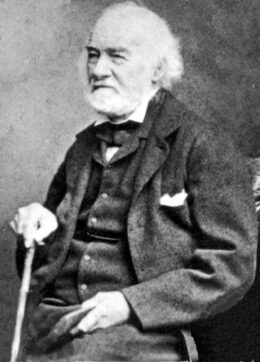
Printed
41 pages
Author(s)
The Tragical Comedy, or Comical Tragedy, of Punch and Judy
John Payne Collier, an author, and George Cruikshank, an illustrator, came together to produce a work called The Tragical Comedy, or Comical Tragedy, of Punch and Judy. The book was ordered by the editor, Septimus Prowett, and published between 1827 and 1828. It was the very first publication in England of a full Punch show where Punch is a glove-puppet. Its publication corresponds to a rising interest in popular shows during the romantic era.
It gained instant popularity as a new expanded edition was released in 1828, as well as in 1832, 1844, 1859, 1870, 1870, 1873, 1881, and so on. The authenticity of the work published by Payne Collier is nonetheless questioned. The book is based on performances given by Giovanni Piccini, an Italian puppeteer, specifically for Collier and Cruikshank to attend. The two men are said to have interrupted the puppet master multiple times in order to finalize their text and drawings. Collier does not hide the fact that he rewrote the text in accordance with personal notes he took in his teenage years. Furthermore, he quotes, in the essay preceding the play, an anonymous poem, which he will later confess to be the author, as well as a Sonnet to Punch, which he gives authorship to Lord Byron - but it will also prove to be false.
The text was translated into French as early as 1836 by Olivier and Tanneguy de Penhoët (pen names of Olivier Mainguet and Anatole Chabouillet). It is published with Cruikshank’s engravings under the title Polichinelle, without any reference to Collier. In 1906, Gustave Kahn reissues it under the title Polichinelle (de Guignol), quotes neither the author nor the translators, and pretends it to be a play performed by Parisian puppeteers in the puppet booths located in the Champs-Élysées.
The protagonist gets rid of anyone bothering him
Punch gets his nose bitten by Toby, the dog. Its master, Scaramouche, accuses him of having abused his dog, and they fight with sticks until his head splits from his body under Punch’s blows. In the following scene, Punch asks Judy for their infant in order to take care of him. However, irritated by his cries, he hits him against the frame of the puppet booth, and throws him in the middle of the audience. In the feud that follows, Punch hits Judy to death using a stick. He then has an affair with Pretty Polly. In the second act, Punch is thrown to the ground by his horse, Hector, and ends up beating to death the Doctor who came to help him. He makes a lot of noise, ringing a bell, and fights with the neighbour who came to ask him to stop. In the third act, Punch fights with a blind man. When policemen and Jack Ketch, a hangman, come to stop him, Punch hits them but is finally imprisoned. Punch must be hung, but he manages to have Jack Ketch hung instead. At the end, the Devil intervenes and fights with Punch, but Punch emerges triumphant.
Other titles
First performance
Presumed date of Giovanni Piccini's arrival to England : his performances inspired the text written by John Payne Collier.
Publications and translations
John Payne Collier: Punch and Judy, with illustrations drawn and engraved by George Cruikshank. London: S. Prowett, 1827/1828
John Payne Collier: Punch and Judy, ill. George Cruikshank. Mineola: Dover Publications, 2006
Polichinelle, drame en trois actes publié par Olivier et Tanneguy de Penhoët. Paris: Bureaux de l'histoire pittoresque d'Angleterre, 1836.
(French)
Keywords
Theatrical techniques
- Prologue
- Versified passages
- Address to the public
- Off-stage voice
- Song
- Aria
- Dance
- Blow-with-a-stick
- Splitting of the body
- Domestic scene
- Speechless character
- Spectacular show acts
- Bawdy equivocation
- Confinement
- Hanging scene
- Blind character
- Final intervention of the devil
- Character thrown out of the scene
- Animal dressé
